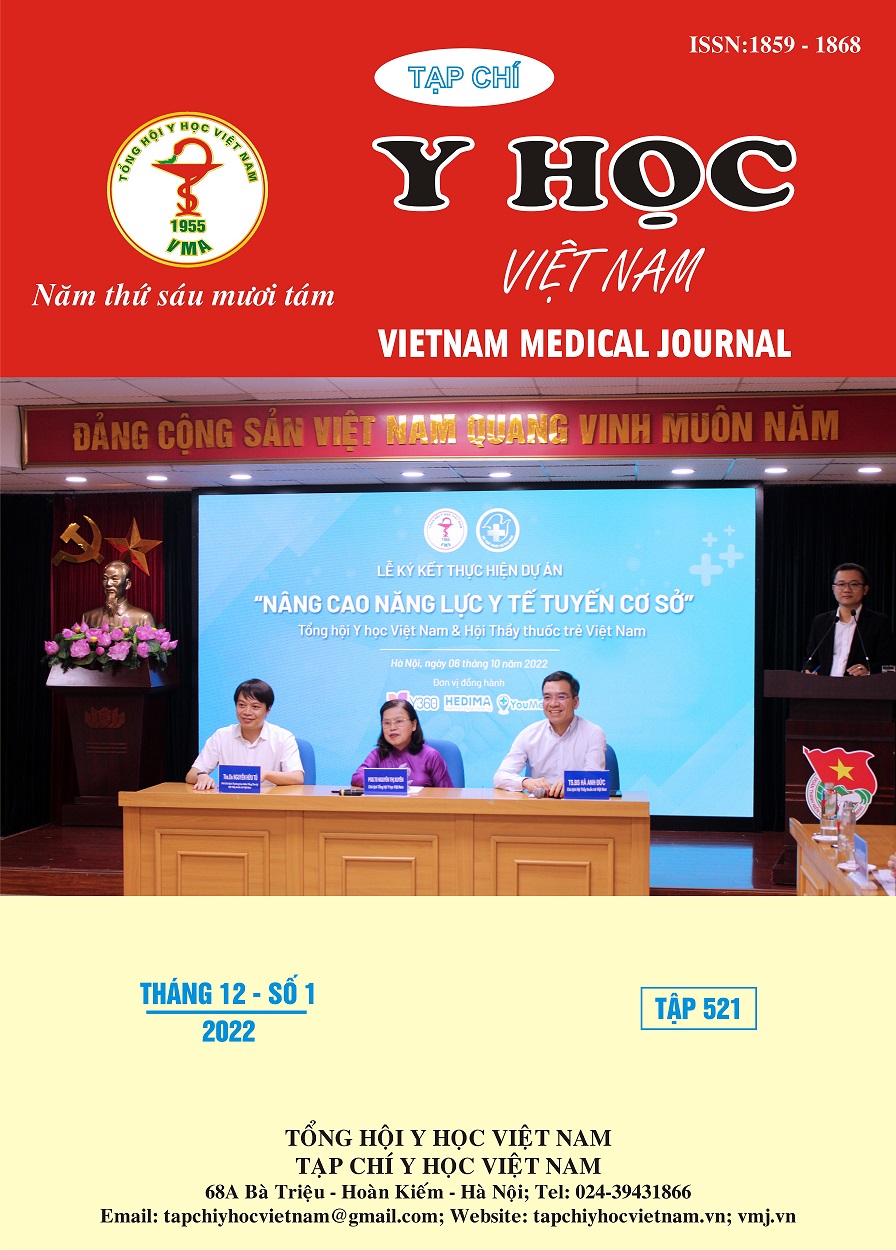MAGNETIC RESONANCE IMAGING OF HEPATOCELLULAR CARCINOMA AFTER RADIOFREQUENCY ABLATION USING LI-RADS V.2018 CATEGORY
Main Article Content
Abstract
Purpose: Magnetic resonance imaging of hepatocellular carcinoma after radiofrequency ablation using LI-RADS v.2018 category. Material and Methods: The study was carried out on 34 patients with 37 hepatocellular carcinoma lesions treated with radiofrequency ablation at the Radiology Department of K hospital from August 2020 to August 2022. Conduct early stage efficacy assessment of treatment based on magnetic resonance imaging characteristics according to LI-RADS v.2018 category. Results: Interreader agreement for the post-treatment lesions according to the LI-TR category was high (k = 0.846; p < 0.001). In 37 follow-up lesions, there were 33 lesions classified as LR-TR Non-viable, and 2 lesions classified as LR-TR Viable with the agreement of both readers. While there were 2 lesions classified as LR-TR Equivocal by 1 in 2 readers, 1 was a residual/recurrent lesion, and 1 was reassessed after 3 months with no visible enhancement. Cases of residual/recurring lesions presenting as a nodular hyperenhancement at the peripheral of the ablation zone in the arterial phase. With the mean ADC value of recurrent lesions being 0.81 x 10-3 mm2, there is a difference between the mean ADC value of the ablation zone and the mean ADC of the liver parenchyma, the difference is statistically significant (Mann-Whitney test, p < 0.05). Conclusion: The combined magnetic resonance assessment of Precontrast sequences (axial T1, T2) with the addition of Diffusion imaging and dynamic subtraction technique according to the LI-RADS 2018 classification is effective and highly consensual in the assessment of carcinoma lesions. hepatocytes after radiofrequency ablation, in which the sign of enhancement component on peripheral lesion is important. Based on the statistically significant difference between the ADC value of residual/recurrent lesions and the ADC value of the liver parenchyma and the ablation zone, it is suggested that the ADC value can be used as a non-invasive quantitative indicator is significant in the diagnosis of recurrence after radiofrequency ablation.
Article Details
Keywords
HCC (hepatocellular carcinoma); RFA (frequency ablation); AFP (Alpha-fetoprotein)
References
2. International Agency for Research on Cancer (IARC). Global Cancer Observatory—Vietnam Population fact sheets. http://gco.iarc.fr/today/data/factsheets/populations/704-viet-nam-fact-sheets.pdf.
3. Forner A, Reig M, Bruix J. Hepatocellular carcinoma. The Lancet. 2018;391. doi:10.1016/S0140-6736(18)30010-2
4. Kierans AS, Elazzazi M, Braga L, et al. Thermoablative Treatments for Malignant Liver Lesions: 10-Year Experience of MRI Appearances of Treatment Response. American Journal of Roentgenology. 2010;194(2):523-529. doi:10.2214/AJR.09.2621
5. Chaudhry M, McGinty KA, Mervak B, et al. The LI-RADS Version 2018 MRI Treatment Response Algorithm: Evaluation of Ablated Hepatocellular Carcinoma. Radiology. 2020;294(2):320-326. doi:10.1148/radiol.2019191581
6. Schraml C, Schwenzer NF, Clasen S, et al. Navigator respiratory-triggered diffusion-weighted imaging in the follow-up after hepatic radiofrequency ablation-initial results. J Magn Reson Imaging. 2009;29(6):1308-1316. doi:10.1002/jmri.21770


